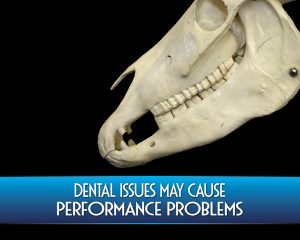Dental Issues May Cause Performance Problems
Click here to read the complete article
The horse’s teeth are crucial for proper eating/chewing and therefore a big factor in whether or not the horse obtains adequate nutrition. Healthy teeth are important for good health and fitness. Teeth also play a role in performance of an equine athlete because tooth problems can lead to pain, which can lead to certain behaviors that can affect performance. Sometimes a performance problem may be subtle or not readily recognized as being linked to a tooth problem. It’s important to figure these things out, with proper diagnosis and treatment, in order to address and correct the underlying issue.
Mary Delorey, DVM (Northwest Equine Dentistry, Seattle, Washington) deals with many dental issues in horses and says the majority of dental problems that translate into performance issues are the conditions that cause pain. Enamel points on the teeth that make contact the soft tissues of the mouth are a frequent cause of pain, for instance.
“Normal wear of the teeth can lead to sharp points, and these points are probably the most common problem, since the lower jaw is about 30% narrower than the upper jaw. Horses need a certain amount of exposed enamel to grind up their food. In the wild, those sharpened projections don’t create much problem, but when we put tack on the horse’s face and a bit in the mouth, this changes things,” she explains. Tack puts pressure in areas that wouldn’t otherwise have any pressure against them.
“Domestic horses that are ridden or driven, with tack on their face and in their mouth, must deal with issues that a wild horse wouldn’t have to cope with, such as a bit, headstall, noseband, etc. The headgear can place direct physical pressure on soft tissues. When there are sharp enamel points next to those tissues, they can cause pain and damage to the soft tissues,” she says.











